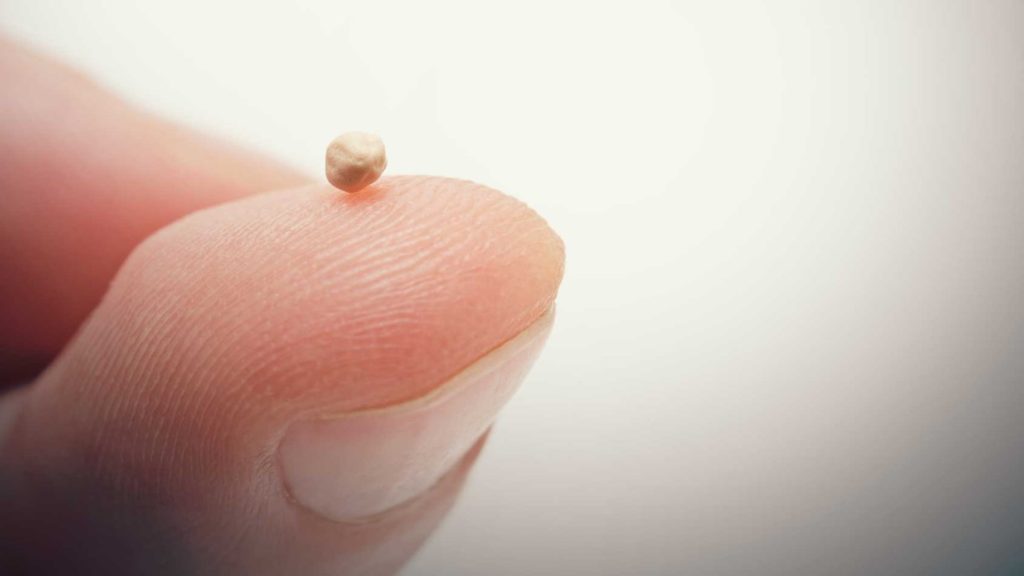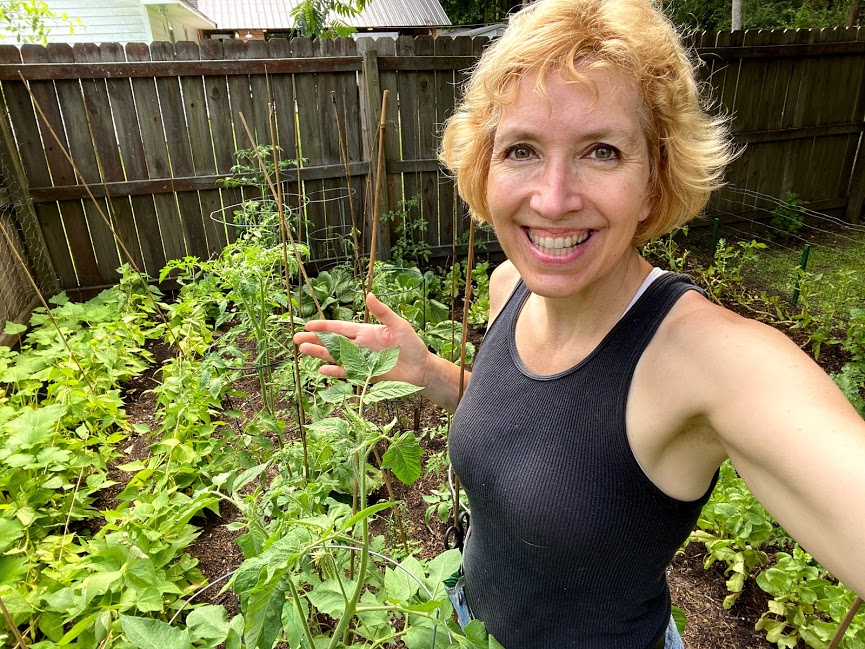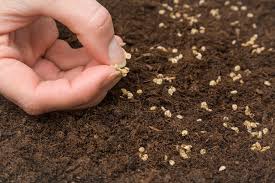Faith the size of a tomato seed
He replied, “Because you have so little faith. Truly I tell you, if you have faith as small as a mustard seed, you can say to this mountain, ‘Move from here to there,’ and it will move. Nothing will be impossible for you.” (Matthew 17:20)

Gardening requires faith. We take tiny dead seeds, place them in the ground, cover them with dirt, give them water, pray for sun, then hope that our efforts won’t be in vain. Sometimes we’re rewarded with considerable crops. Other times, we see little reward for all our valiant endeavors. As I lifetime gardener, I can fully attest to both outcomes.
This year, for the first time, I planted everything in my garden from seeds. I’ve previously seeded beans, corn, and leafy vegetables but this is the first time I’ve tried seeding tomatoes. I’m not sure I would have attempted to do so were it not for the suggestion from a co-worker of mine.
After learning we were fellow gardeners, my friend told me he had purchased an abundance of tomato seeds for his brother and offered whatever remained to me. A kind gesture, I thought, but I was wary about the results. Growing plants from seeds can be hard. I wasn’t quite ready to try tomatoes this way.
While working from home during the COVID pandemic, I emailed my friend for assistance with a work-related matter. After thanking him for his help, I asked him how his garden was doing. In his response, he detailed the health of his hydroponic plants, then reminded me, anew, about his remaining seeds. I asked him to tell me what varieties he still retained.
Rather than sending me a list of names, my friend sent me a link to the descriptions of his heirlooms, and I was immediately hooked. From his inventory, I chose the following:
- Azoychka – Russian yellow. An abundant producer with a slight hit of citrusy sweetness.
- Black Prince – Three to five-ounce fruit. Dark brown with red interior. Originally from Irkutsk, Siberia.
- Jubilee – Drought-tolerant yellow. Southern heirloom. Heavy producer.
- Hillbilly – A West Virginia heirloom, the marbled yellow and red coloring remains inside and out. Beefsteak tomato, producing one to three-pound fruit.
- Mr. Stripey – Beefsteak variety with yellow-orange flesh and subtle red striping. Two-pound slicing tomato.

When the day came to plant my seeds, I was shocked at their minuscule size. The tiny, flat particles looked so small and frail that it was hard to imagine a large plant growing from something so diminutive. I planted three seeds per mound and hoped that at least one would survive. Months later, I’m excited to say that I now have thirty-seven thriving plants from my original twenty-four mounds – some of which are now nearly shoulder-high.

While planting my seeds, I was reminded anew of how Christ spoke of our need for faith by using a common seed in His illustration. There are so many lessons to glean from this comparison.
I must have faith to believe in a God I can’t see. Just as I can’t see the mature plant when I bury its seed, I witness evidence of plant maturity everywhere I look. From the beautiful mimosa trees in my yard to the hundred-year-old live oaks in downtown Savannah, all plant life grows from seeds.
I may not see God but the evidence that He exists resides in everything from plants to the molecular structure of my body.
My faith reminds me that Christ’s perfect sacrifice provides the only means for my eternal salvation. I may want to take credit for the growth of my plants, but the fact remains that humans have very little control over the force of nature.
Similarly, I may try to earn my way into heaven by leading a good life and helping others, but the Bible reminds me that all my “all [my] righteousnesses are as filthy rags.” (Isaiah 64:6). “For by grace [I am] saved through faith; and that not of [myself]: it is the gift of God.” (Ephesians 2:8)
Even a little faith in Christ can turn impossibilities into possibilities. Faith in myself is not enough. I can’t make a tiny seed become a big plant – but God can. Let’s look at the impossibilities of DNA, in general. Human bodies contain approximately ten trillion DNA cells. If all these cells were joined together, they would stretch from the earth to the moon and back to earth one thousand, five hundred times. (1) How all this information can be housed in our bodies is unthinkable, and yet scientific study has proven it to be a reality.
Such intelligence and intricacies did not incidentally appear. Such impossibilities do not just happen. “With God all things are possible.” (Luke 1:37) It takes more faith to believe in random creation than to acknowledge the reality of a divine Creator.
From an insignificant seed – whether tomato or mustard – miraculous things grow. From tiny faith, incredible blessings follow.
Just as I believe my plants will grow, I believe that God will take care of me. “And my God will meet all your needs according to the riches of his glory in Christ Jesus.” (Philippians 4:19) I’ve seen this fact proved over and over again in my personal life. God has sustained me through every challenging situation I’ve ever faced in life. That’s a fact that can never be disputed.
From the moment I accepted Christ into my heart, my life has never been the same. He has taken my small faith and made it grow large enough to move mountains – or grow tomatoes. Nothing is impossible with God.
Reference:
- Braganza, M. 2016, November 6. Your DNA can stretch to the moon. Retrieved from https://www.dnaindia.com/technology/report-your-dna-can-stretch-to-the-moon-2270567#:~:text=Every%20human%20being%20has%20about,and%20come%20back%20four%20times.